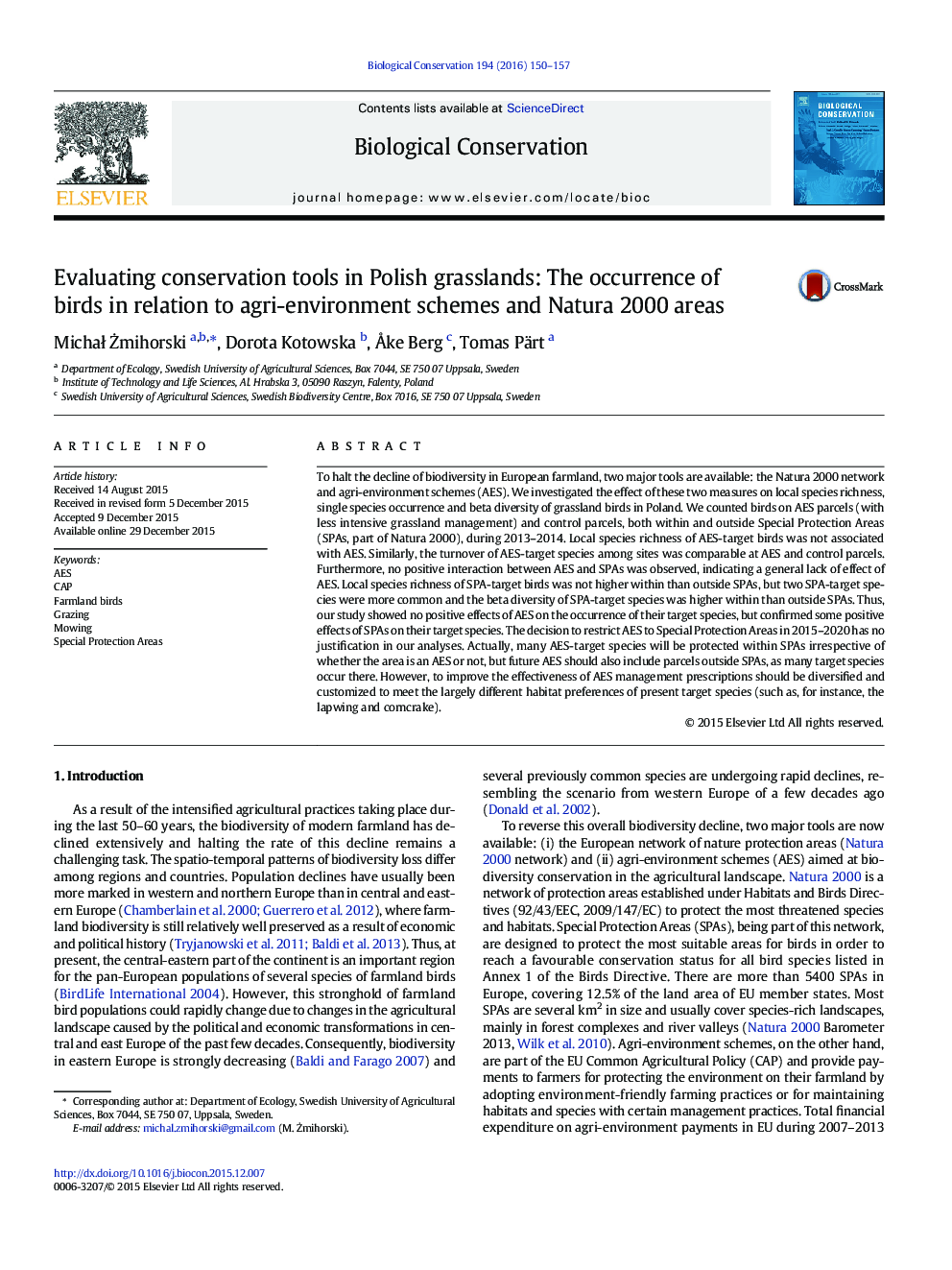| کد مقاله | کد نشریه | سال انتشار | مقاله انگلیسی | نسخه تمام متن |
|---|---|---|---|---|
| 6298800 | 1617907 | 2016 | 8 صفحه PDF | دانلود رایگان |

- Agri-environment schemes (AES) and Natura 2000 are two farmland conservation tools.
- Neither the alpha nor beta diversity of grassland birds was associated with AES.
- The beta diversity of grassland birds was higher within Natura 2000 areas.
- The combination of AES and Natura 2000 had no further effect on diversity.
- We suggest customizing AES to meet the habitat preferences of target species.
To halt the decline of biodiversity in European farmland, two major tools are available: the Natura 2000 network and agri-environment schemes (AES). We investigated the effect of these two measures on local species richness, single species occurrence and beta diversity of grassland birds in Poland. We counted birds on AES parcels (with less intensive grassland management) and control parcels, both within and outside Special Protection Areas (SPAs, part of Natura 2000), during 2013-2014. Local species richness of AES-target birds was not associated with AES. Similarly, the turnover of AES-target species among sites was comparable at AES and control parcels. Furthermore, no positive interaction between AES and SPAs was observed, indicating a general lack of effect of AES. Local species richness of SPA-target birds was not higher within than outside SPAs, but two SPA-target species were more common and the beta diversity of SPA-target species was higher within than outside SPAs. Thus, our study showed no positive effects of AES on the occurrence of their target species, but confirmed some positive effects of SPAs on their target species. The decision to restrict AES to Special Protection Areas in 2015-2020 has no justification in our analyses. Actually, many AES-target species will be protected within SPAs irrespective of whether the area is an AES or not, but future AES should also include parcels outside SPAs, as many target species occur there. However, to improve the effectiveness of AES management prescriptions should be diversified and customized to meet the largely different habitat preferences of present target species (such as, for instance, the lapwing and corncrake).
147
Journal: Biological Conservation - Volume 194, February 2016, Pages 150-157